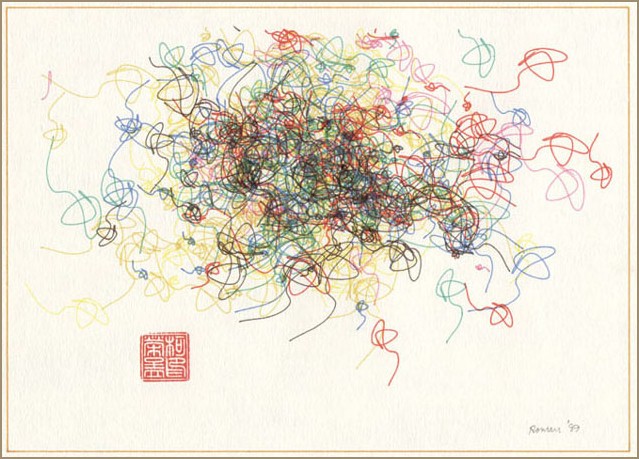Mood board – generative art
- Generative art refers to art that has been created with the use of an autonomous system (a system that is non-human and can independently determine features of an artwork that would otherwise require decisions directly from the artist)
- Examples of generative art include computer generated artwork that is algorithmically determined, systems of chemistry, biology, mechanics and robotics, manual randomization, maths, symmetry, etc
Examples:
Musikalisches Würfelspiel (Musical Dice Game) – Johann Philipp Kirnberger
Dice were used to select musical sequences from a numbered pool of previously composed phrases. This system provided a balance of order and disorder. The structure was based on an element of order on one hand, and disorder on the other.
John Cage used chance as a defined rule in a rigorous fashion to exclude predetermined connections. He was concerned with making sounds possible in a way completely independent of the composer. To do this, Cage for example used sound carriers (instruments) which were completely independent of his composition. In “Imaginary Landscape No. 4” (1951), he wrote a piece for 24 radios. He laid out rhythms and sequences Using traditional notation. The result, however, remained unplanned, dependent upon the place and time of the performance, broadcast frequencies and radio programme structures.



















- Generative art systems can be categorized as being ordered, disordered, or complex.
- For Clauser, a critical element in generative art is that process and change are among its most definitive features
- For Adrian Ward, generative art is a term given to work which stems from concentrating on the processes involved in producing an artwork, usually automated by the use of a machine or computer, or by using mathematic or pragmatic instructions to define the rules by which such artworks are executed.
- Philip Galanter defines generative art as any art practice where the artist creates a process, such as a set of natural language rules, a computer program, a machine, etc, which is then set into motion with some degree of autonomy contributing to or resulting in a completed work of art.
**All information quoted or paraphrased from Wikipedia unless specified**